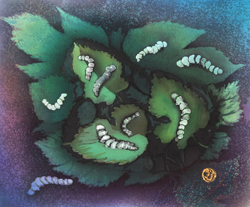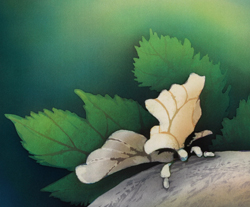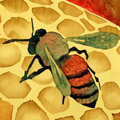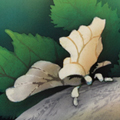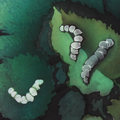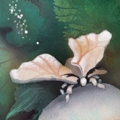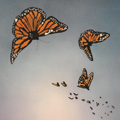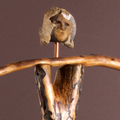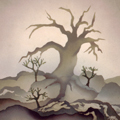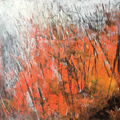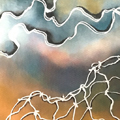| BUGS & BUNNY: ART ENABLED BY HONEYBEES, MOTHS, & BORING BEETLES |
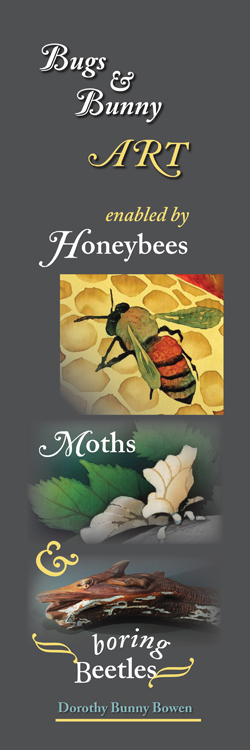 |
|
||||||||||||||
This show hung at Wild Hearts Gallery in Placitas Oct. 2—Nov 4, 2018. Statement: My lifelong relationship with insects as art enablers began in sixth grade: I carved a balsa honeybee (Apis mellifera) for the science fair. Later, bees provided material for models for lost wax casting and, since 1980, a resist for my batik. My medium of choice since 1999 has been Japanese rozome on silk, a fiber produced for millennia by the larva of the silk moth (Bombyx mori). It takes 2,000–3,000 cocoons to make a pound of silk and as many as 5,000 to make a kimono. One of the pieces in the show includes cochineal** applied as a pigment. While doing research for the Museum of International Folk Art in Santa Fe in the early 1970s, I studied textiles dyed with rich cochineal. In Latin America these scale insects (Dactylopius coccus) are still cultivated and have been bred for large size for millennia. The prickly pear cactus by my studio in Placitas supports a wild native cochineal, though the insects are too small to be commercially valuable. Recently I have returned to my original medium of oil painting, but this time with a twist. Beeswax and solvent are mixed with oil paint to form a rich impasto which can be applied with a palette knife and manipulated with other tools. So it is that most of the material with which I work either comes from, or is impacted by, insects. Without the honeybee and the silk moth, there would be no rozome on kimono silk or cold wax and oil. And without the boring beetles, the sculptures would be, well, boring. —Dorothy Bunny Bowen These are details of some of the pieces in the show; To see the full piece click on the images.
|
|||||||||||||||
 |
|||||||||||||||
